Justine Menard
Glass artist Justine Menard shares how intuition, slowness, and storytelling shape her sculptural, wearable pieces.
Born and raised in Paris, Justine Menard began her creative journey as a stylist. Immersed in the world of silhouettes, materials, and emotion, she eventually found in glass a more intimate and poetic medium — one that breathes, vibrates, and captures fleeting beauty.
Interview EMILY PETRUCCIONE
Images courtesy of CORDERA & JUSTINE MENARD
ORIGINS & JOURNEY
What were you drawn to creatively as a child? Were there early moments or memories that hinted at the artist you’d eventually become?
As a child, I already lived in my own dream world. I spent hours collecting small treasures: stones, leaves, pieces of broken jewelry. I was constantly creating visual stories, whether by creating shapes with clouds or simply imagining dream worlds.I was deeply fascinated by fragility and light, by how something delicate could yet have so much presence. I think I've always sought beauty in the unseen, the in-between. This silent obsession with detail has never left me.
Before glass, you worked as a stylist. What did that chapter teach you, and how did it lead you to the language of glass?
Styling was like composing poems with clothes, colors, textures. It taught me to listen to my intuition, to tell a story through feeling more than logic. But over time, I craved something more tactile, more personal. Glass came like a whisper, first as curiosity, then as a calling.
The moment I saw molten glass moving like honey, I felt something ancient and alive awaken in me. It was as if the material had been waiting for me all along. Glass lets me work with fire and breath, with rhythm and risk, it’s a language of emotion, and it speaks without words.
You're originally from Paris and now live in Barcelona. What prompted you to move there, and how has your environment shaped your practice?
Paris taught me to see with precision, but Barcelona taught me to feel freely. I felt that life was inviting me to come to Barcelona simply to awaken my curiosity. Here, I feel like I can breathe more deeply. My practice has softened and opened up. There's more room for slowness, intuition, and listening.
CREATIVE PROCESS
Glasswork is such a unique and poetic medium. What called you to it?
It started as a gentle pull, almost mysterious. I always feel I didn’t choose glass but it chose me. There was something hypnotic about the way it moves, the way it holds both fire and fragility. Watching it transform felt like witnessing alchemy. I really think glass is alive. It demands presence, breath, surrender. I was so in awe about the language of this material. The moment I tried it, I knew I had found my element. It felt like returning home to a language I had always known but never spoken.
You work primarily with borosilicate glass. What is it about this material — its properties, and personality — that resonates with your artistic voice?
Borosilicate is strong yet delicate, clear but full of nuance. Because of its particularity of laboratory glass, I feel it is a very educated glass and easy to work with. Most of the time it gives time and space to explore, create and research shapes or any forms. That is why I like working with it. It lets me sculpt the invisible, invites you to slow down and reflect. There’s a purity to it that I love. It allows me to create forms that feel very personal and intimate. It helps me to discover another world I had no idea existed.
“Glass lets me work with fire and breath, with rhythm and risk, it’s a language of emotion, and it speaks without words.”
How intuitive is your process? When working with a medium so fluid and unpredictable, how do you stay open to what the material wants to become?
My process is almost entirely intuitive. I rarely draw. I'm not afraid of the blank page and I really trust my instincts and feelings. I go with the flow and discover the story as I create. I feel like glass is limitless! There are no limits to artistic creation or technique. That's why, when I'm working and creating a few prototypes or tests, each one can have a different story. So I choose a test and develop that idea to create a collection.
Can you share what sourcing glass looks like in your practice? Do you seek out specific regions for their material qualities, or do you tend to source more locally — whether in Spain or along your travels?
I mainly source my borosilicate glass from specialized suppliers in Europe, Germany, Italy, and Spain. I care about the quality of the glass and choose the best. During my travels, I am also always on the lookout for glass rods in old workshops, forgotten tools in dusty corners. I also love finding artisans who create their own glass rods. There are so many incredible artisans who create their own glass… which makes it so special and adds an extra touch to my work.
THEMES, SYMBOLISM, & INSPIRATION
Many of your pieces, such as the Les Néréides earrings, evoke elements of nature and mythology. How do these references influence your creative process?
Nature and mythology speak the same language: that of cycles, symbols, whispers. Once I've created my collections, these are the first themes that come to mind: mythology, a desire for softness, fluidity, and feminine strength. I like to think that each piece carries within it a fragment of this invisible world.
How do you ensure the delicate beauty of glass in your jewelry and wearables is also practical and durable enough for everyday use?
Borosilicate glass is naturally more resistant than most people imagine , it's used in scientific labs, it can handle heat and shock. But beyond the material itself, the more you’ll take care of it the more it will remain intact. I still have my first jewelry that I created some years ago, even though I wear them all the time. It is more about how you care about your personal objects.
With so much elegance and purity in your creations, do you have any rituals or creative practices that help you stay grounded in this vision?
It's a question of balance. I need space, slowness, and simplicity to let my creativity express itself. But I also need to explore an extravagant and exaggerated side to counterbalance this vision of purity.
I have an elegant and pure universe, but also a very creative and extravagant side; my intention is always to remain myself in what I create and look for. It has to speak to me and I can recognize myself in it. Glass always reflects our inner state. That's why I try to stay close to my truth.
“My process is almost entirely intuitive. I rarely draw. I’m not afraid of the blank page and I really trust my instincts and feelings. I go with the flow and discover the story as I create.”
CORDERA COLLABORATION
You've worked on some wonderful collaborations, including the one you recently had with Cordera. How did this partnership come about?
I think It began quite organically, we were already connected by shared values: craftsmanship, intention, and a vision of femininity. When Cordera contacted me, I felt like it was a natural extension of my world. Trust was established from the start, which allowed for a true creative dialogue. The process was really clear and fast, I was proposing ideas and they were responding to it. I really felt we were collaborating and creating something together.
Cordera is known for quiet strength and refined minimalism. How did you interpret their philosophy through your glass creations?
I approached it as a subtlety, like the transparency of glass. Cordera's language is subtle, almost meditative; I wanted to echo it with organic and elegant forms. The pieces I created were timid but strong: pure lines, gentle curves. Nothing too garish, just presence. Just emotion contained within the glass.
How did their focus on sustainability and intentionality influence your material and design choices?
I already work very slowly and intentionally. Each piece is handcrafted with care and attention to detail. Nothing is rushed, nothing is wasted. Sustainability isn't just about materials; it's about rhythm, respect, and timelessness.
Do you see this as a unique moment or the beginning of an ongoing dialogue between you and fashion and design brands?
I see it as an opening, a conversation that's just beginning. I like the idea of glass venturing into other worlds: fashion, interior design. When values align, collaboration becomes a kind of shared poetry.
CLOSING REFLECTIONS
You’ve described your pieces as "sculptural poems," invitations to stillness and contemplation. What do you hope someone carries with them after encountering your work — whether they wear it, live with it, or simply pause to observe it?
I hope they feel a moment of pause like a soft inhale. A reconnection to a self, a presence. I want my pieces to be reminders that beauty exists in slowness, in fragility, in the in-between. Whether worn or simply observed, I hope they carry a sense of presence.
If your pieces could whisper a message to their wearer, what might they say?
They would say:
You are allowed to be soft, rigid, cold, warm, cracked, broken.
You are enough & you are valid
You carry your own magic
I’m just here to remember it back to you.
What's your next project? Are you interested in new materials, new collaborations, or new creative directions?
I have lots of ideas in terms of glass work and glass design, whether for decorative objects, jewelry. I have a list of ideas and tests I want to develop. I'd like to explore more immersive formats: installations, performances, and perhaps even perfume. Collaborations are definitely a calling, especially with brands or artists who value slowness, mystery, and care. But above all, I want to remain attentive to glass, to life, to what wants to emerge.
For more information about Justine, visit her website, and to view the full collaboration with Cordera visit Cordera.es
Images and screen captures from video made for the collaboration courtesy of Cordera
YOU MIGHT ALSO LIKE

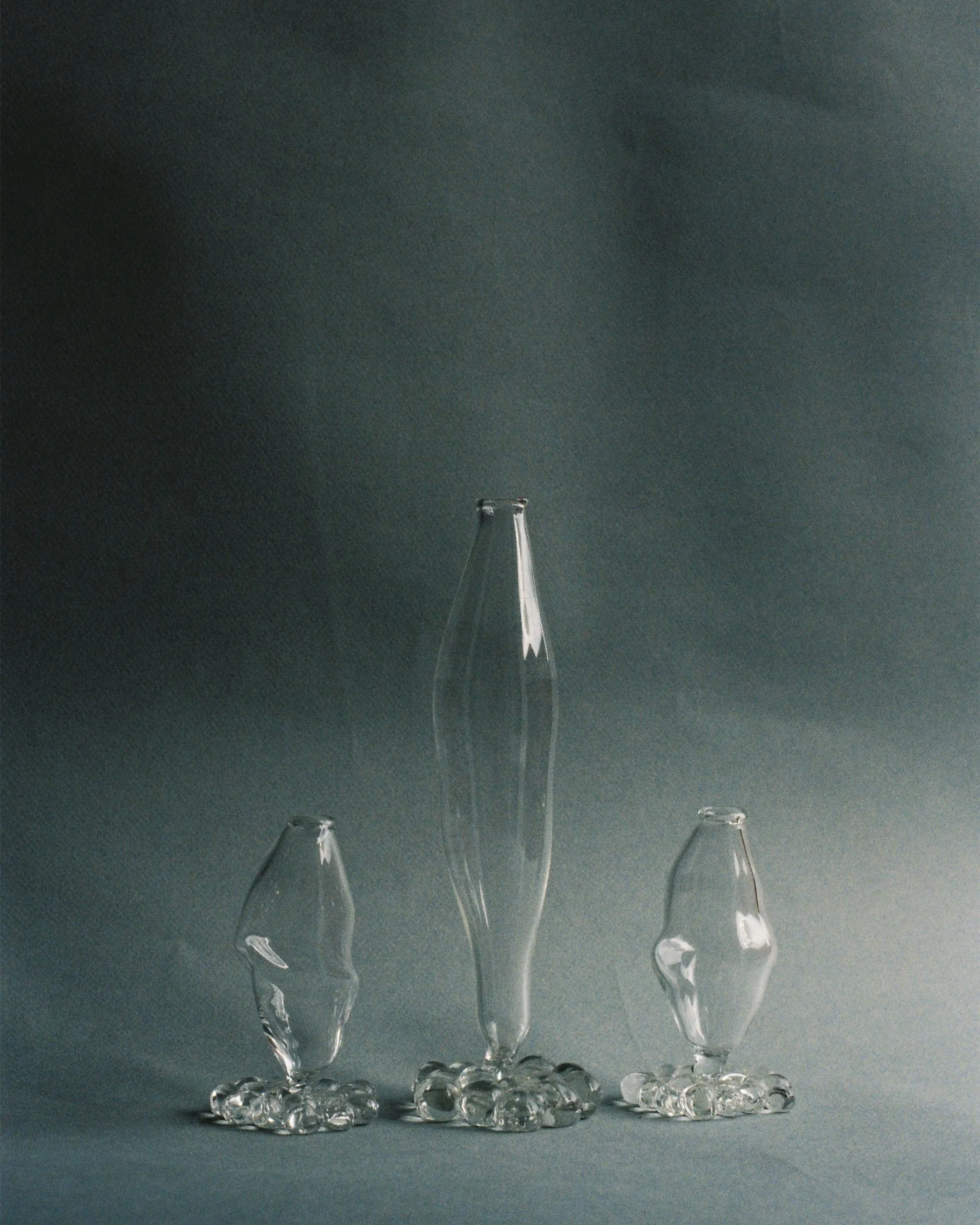












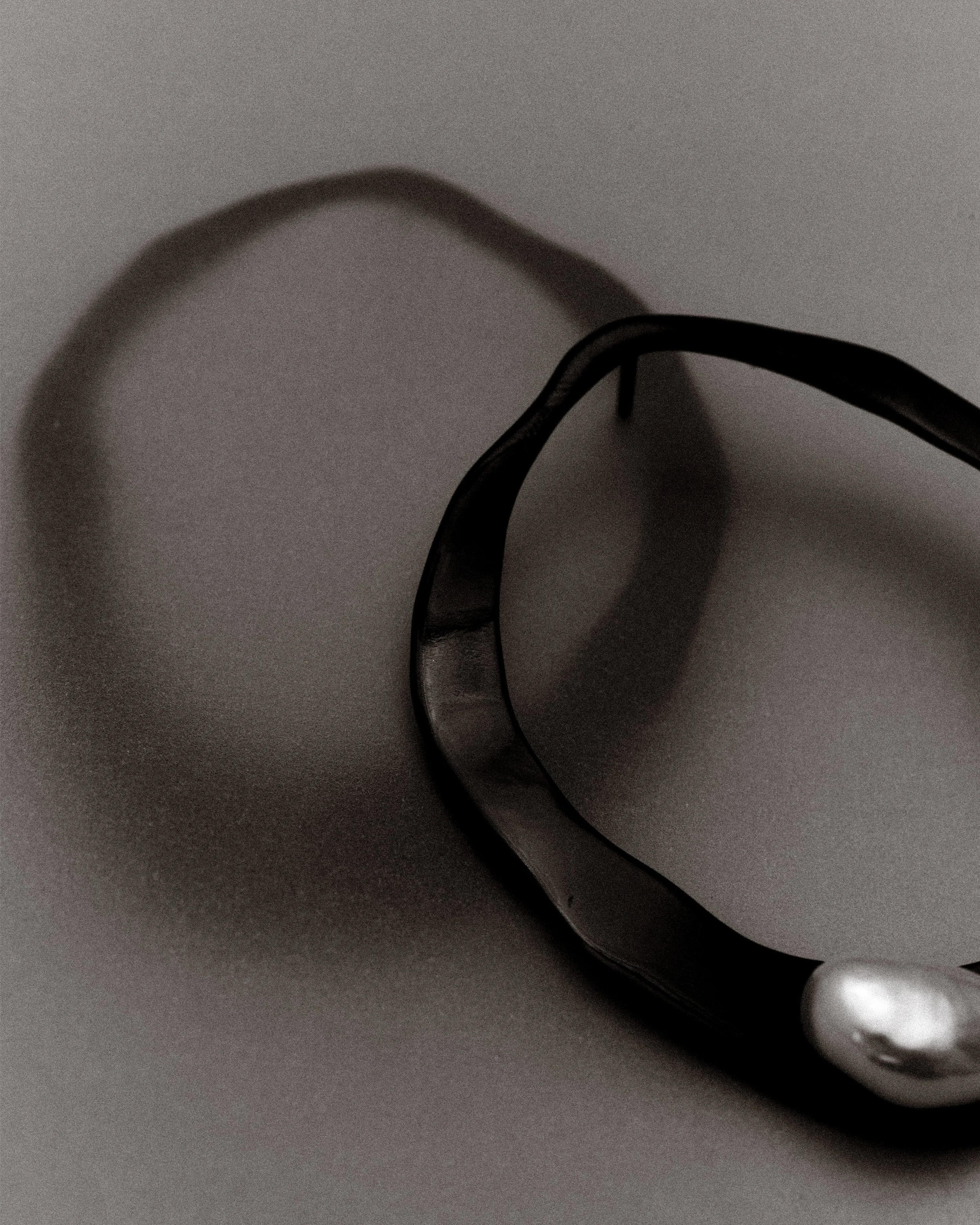
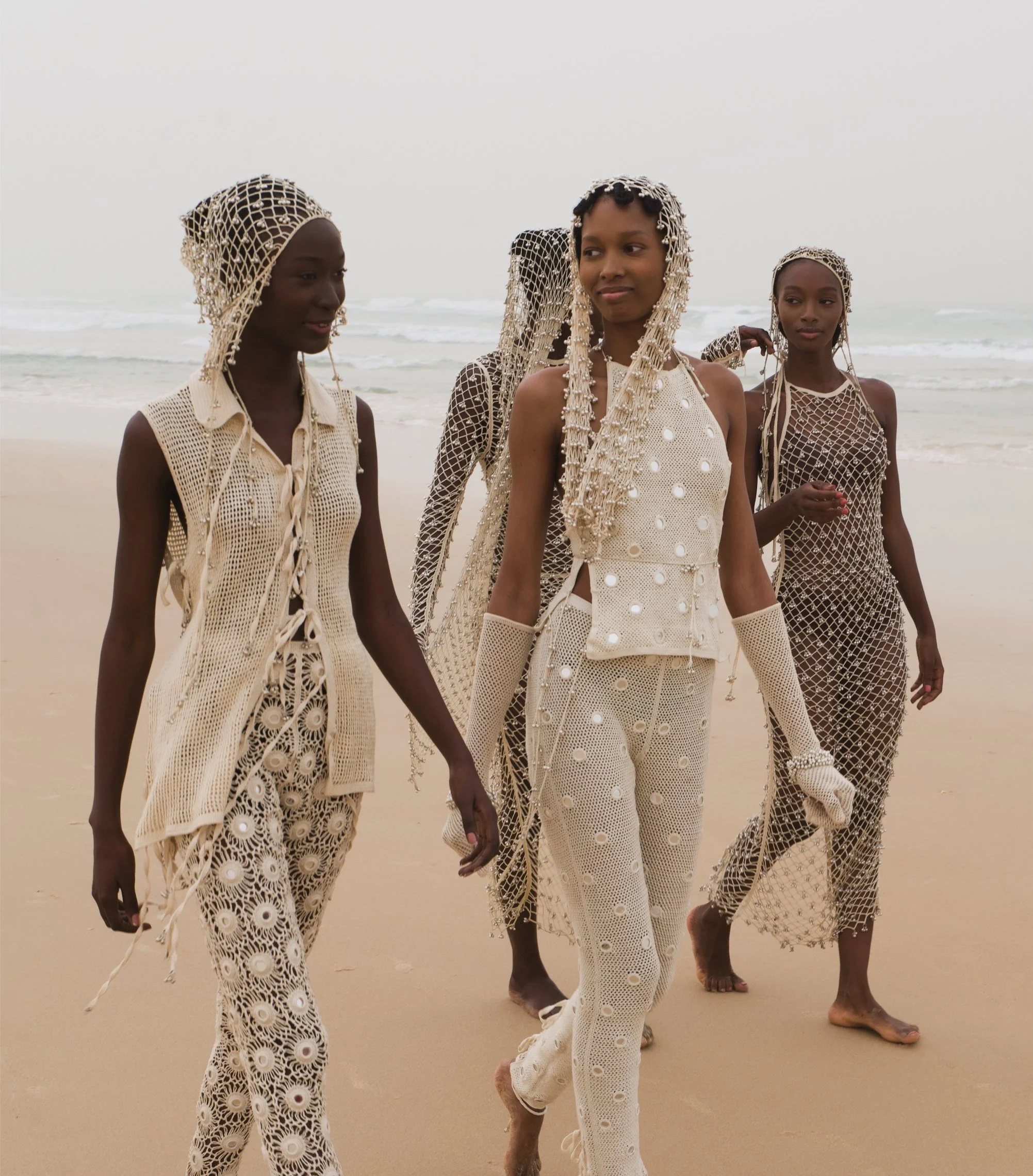

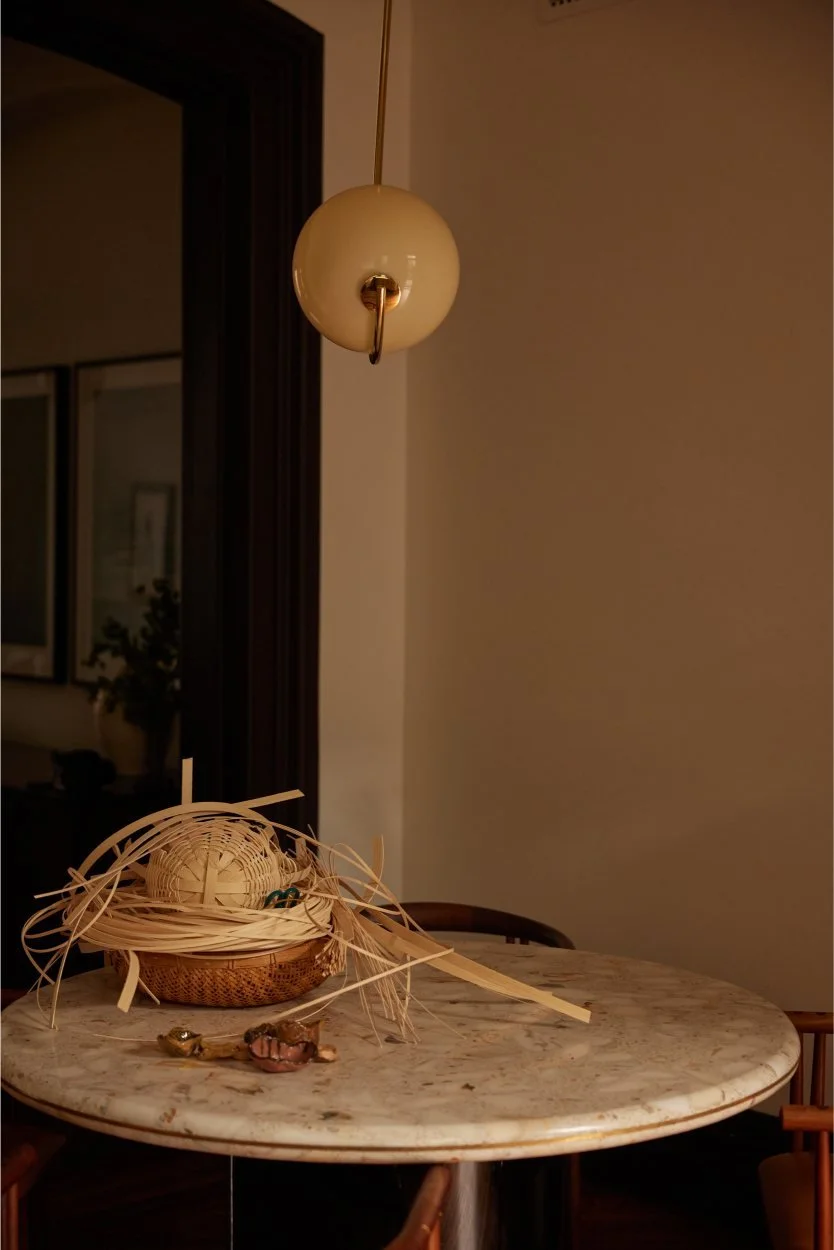
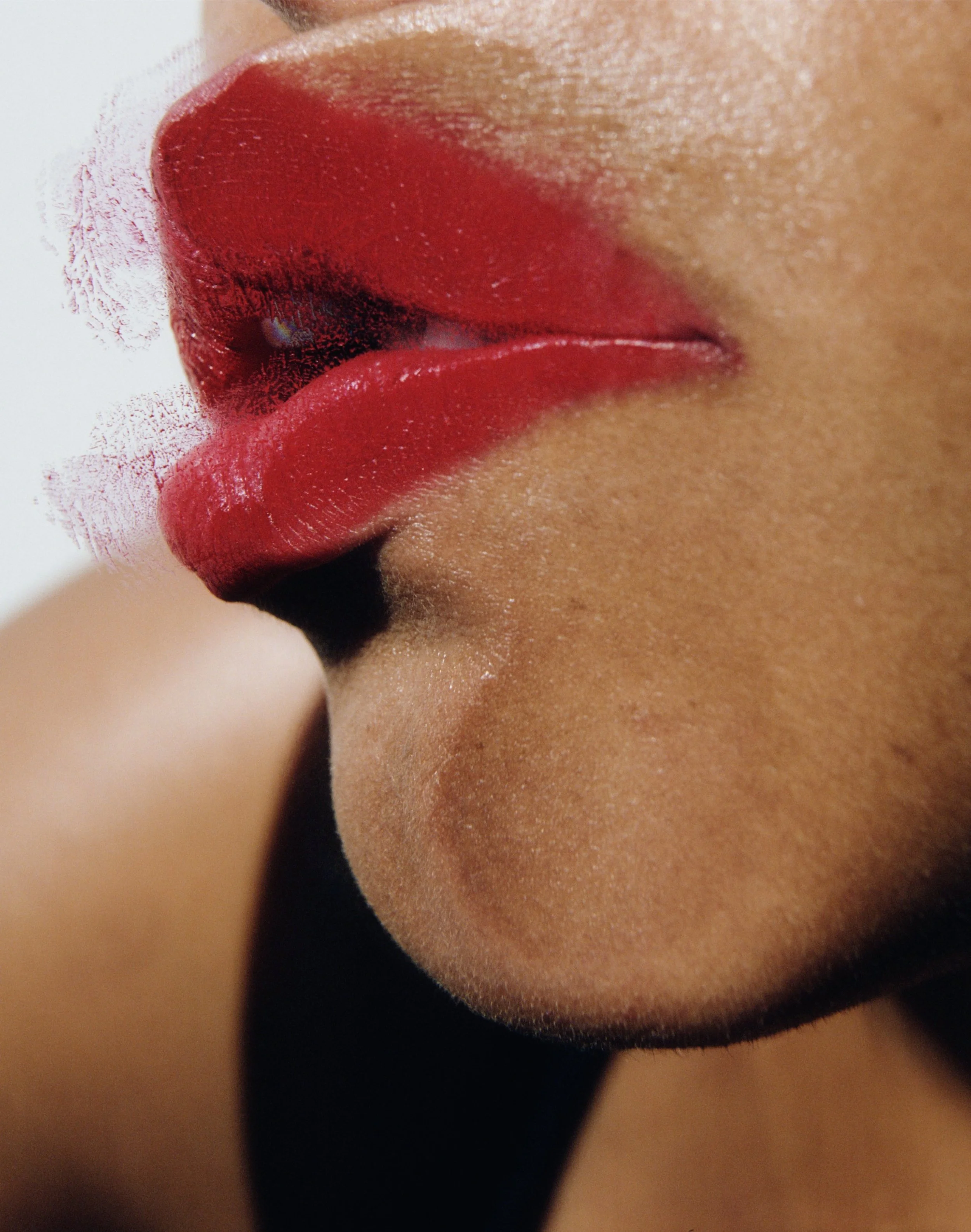

We spoke with Founder & Creative Director Clara Hofer-Maire about TURN’s origins, the vision behind the new showroom, and what’s next for the brand’s evolving world of vintage.